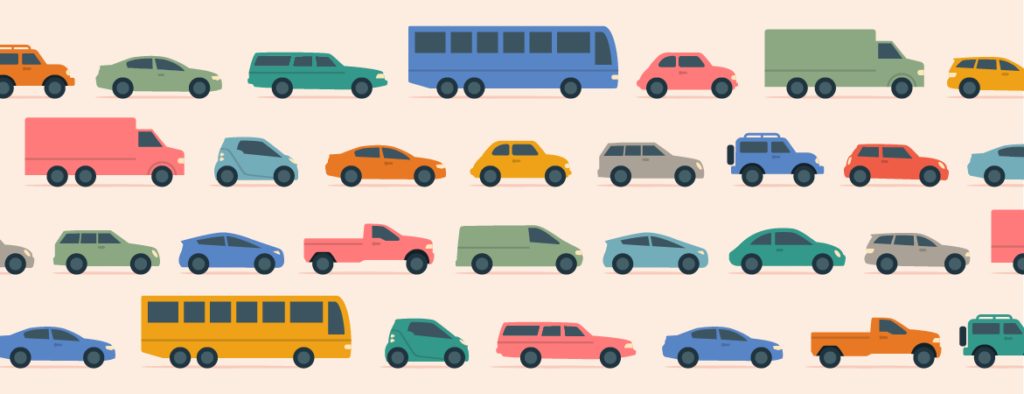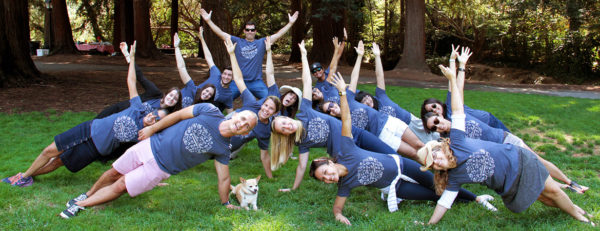For some the daily commute is a dreaded task. Terrible traffic and crowded trains can bring anyone down. But instead of considering it wasted time, here are some ways to reclaim it as a useful, creative part of your day.
#1 Mise-en-place your commute.
The French phrase mise-en-place, which means “put in place,” is most closely associated with the culinary world as it speaks to a system of getting everything prepped and in place before you start cooking. Apply this same mindset to your commute to make sure you have everything you need, and are as comfortable and stress-free as possible.
For example, this Winter my pre-commute checklist looks something like:
- Make sure I’m good on gas, got my work bag, lunch, and gym bag
- Check the air freshener is still working (the power of aromatherapy)
- Turn on the seat warmer and put on my fingerless gloves (for those frigid mornings)
- Plug in my phone, check which route Waze recommends, and set up a podcast
- Ensure I’ve got coffee within reach
#2 Switch up your navigation voice.
I use Waze daily to keep an eye on traffic and hazards (less for the actual navigation). Rather than keep the default voice, it’s often entertaining to hear “police reported ahead” in a pleasant British accent or Morgan Freeman’s basso profundo voice.
#3 Listen to a new podcast or audiobook.
As an alternative to music, consider a podcast (there are so many fantastic, free podcasts out there) or an audiobook (which you can often “borrow” free through your local library). I tend to switch it up depending on my mood. Annoying stop and go traffic? A lighthearted comedy podcast puts me in a better mood. Craving inspiration? 99% Invisible feeds that need. Longer train ride to SF? Longform story podcasts or audiobooks are perfect.
Additionally, there are many apps to choose when it comes to listening, such as: Overcast, Stitcher, Pocket Casts, Audible, TuneIn and even Spotify.
#4 Catch up on calls.
Make use of that time sitting in your relatively quiet car to call your mom or that friend you’ve been meaning to call back (hands-free of course).
#5 Choose the right music.
Select music for your mood (or desired mood), whether you need to psych yourself up for a big meeting, wind down from a long day, or just keep yourself entertained. To get amped up, pick something catchy to sing along with (bonus points if you nail that high note). On the flip side, softer classical or pop music may help you relax. Movie soundtracks make the drive feel much more cinematic (which can be rather entertaining).
#6 Discover new ideas.
When you work in a creative industry, the best ideas don’t always come in the hours you’re sitting at your desk. Often, it takes a change of scenery or repetitive task to give your mind the freedom to wander. Much like epiphanies that happen while showering, the monotonous nature of driving to work is an optimal opportunity for your brain to discover new ideas (or those that were previously on the tip of your tongue).
Take advantage of the time in the car to work through your presentation speaking points or brainstorm ideas for that new project. An hour-long Caltrain ride to the city becomes a productive time to sketch out new ideas. There’s something about the cycle of thinking, sketching, people watching, and staring out the window that really seems to work.
#7 Learn a new language.
Many of us may have taken a second language in high school, but since then have practiced very little. Whether you’re looking to brush up on your rusty Spanish or actively looking to become fluent in French, there are many resources available for commuters (many of which are free).
Drivers will want to stick with audio based activities like this free playlist on Spotify for learning Spanish, or buy one of the affordable Living Language CDs through Amazon. Those taking the bus or train may opt to use the highly-rated app Duolingo. In addition to being free, Duolingo gives you access to over 20 languages (bonus that its interfaces are user-friendly).
#8 Find a better way to get there.
One of the best ways to make the most out of your commute is to optimize your route. Sometimes traffic is unavoidable, but if you look at traffic patterns there may be ways around that highway entrance that always gets backed up, or routes with a few too many left turns. I find it helpful to reference a few different navigation sources before leaving home and work to see if there are accidents or hazards to avoid (this also helps when there are multiple ways you’re able to get from A to B). If you’re able to, ditch the car altogether and walk or ride your bike to work. Even the simple act of leaving a few minutes early will help you avoid having to run to catch that last bullet train.
Ultimately, it’s up to you to find that sweet spot that works for you. Yes, that perfectly optimized drive may need to change depending on the time of day or year, but having a plan certainly takes a big burden off your daily stress.


